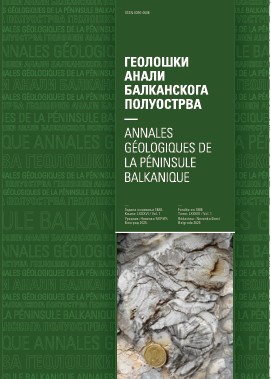Gornjopleistocenski sisari iz pećinskih naslaga Srbije
Upper Pleistocene mammals from cave deposits of Serbia
Abstract
Carbonate rocks undergoing karstification have an extensive distribution on the tenitory of Serbia, which resulted in the formation of numerous eaves and other karst features. Dry caves frequently contain Quatemary deposits. Explorations of caves have been recently intensified. Large mountain areas have been prospected, and excavations performed in several localities. In moie then twenty caves mammal fossil remains were found. This paper presents the results of their paleontological analysis.
Like in other karst regions of Europe, cave bear is regularly present and dominant member of large mammal fauna in Upper Pleistocene cave deposits of Serbia. Its characteristics are distinct speleoid features; large size compared with the varied populations of cave bears in Europe, marked sexual dimorphism, and a high percentage of juvenile age group in most of the localities. Besides the cave bear, there are numerous carnivores, whereas the presence of large herbivores is mostly dependent on taphonomic reasons, physical setting of localities, and paleoecological circumstances.
Abundant remains of small mammals have been collected in localities where sediments were washed out. A prevalence of steppe or forest animal elements was noted, depending on the stratigraphic position of beds containing them, local or regional paleoecological situation, or different factors of the remains accumulation.
Copyright (c) 1997 Geološki anali Balkanskoga poluostrva

This work is licensed under a Creative Commons Attribution 4.0 International License.










